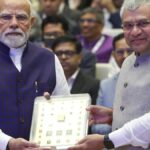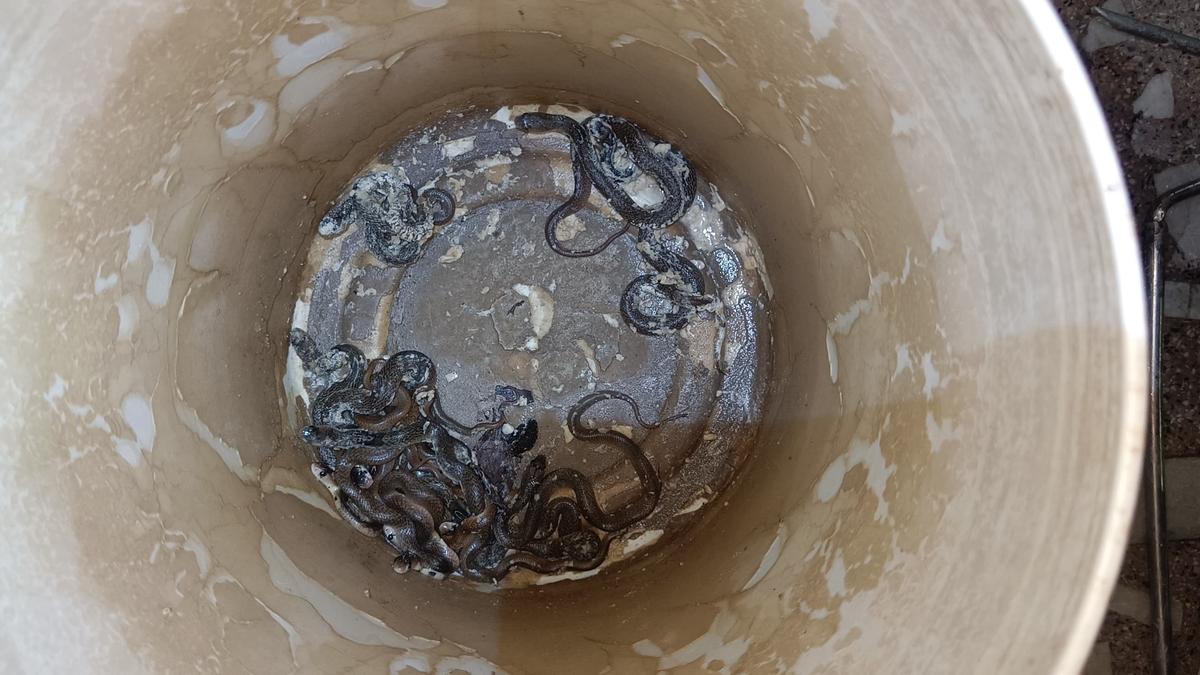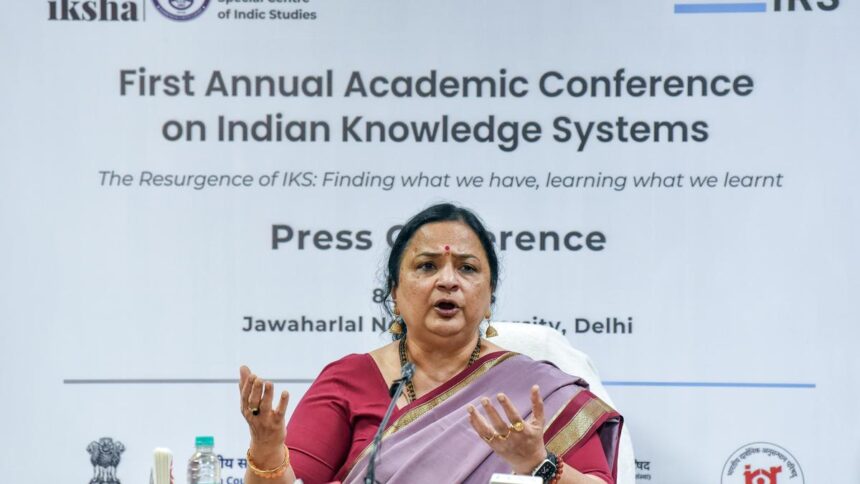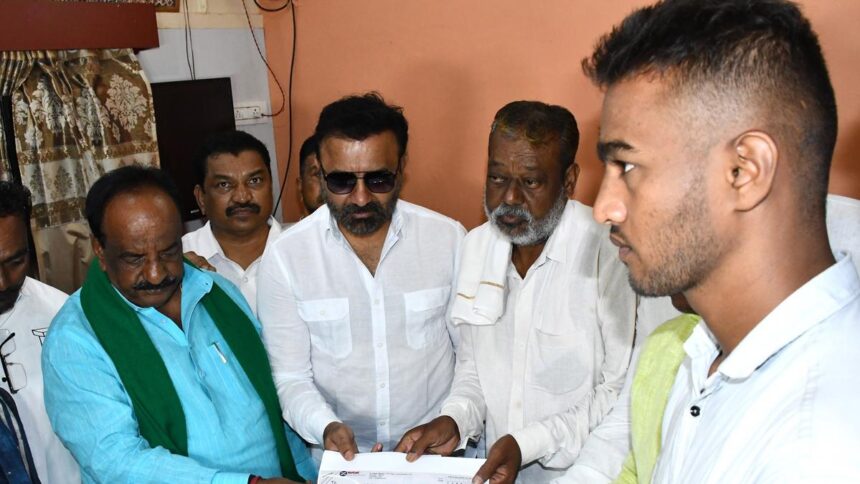
The snakelets of Spectacled Cobra rescued at Jagadgirigutta in Hyderabad, around a week ago.
| Photo Credit: BY ARRANGEMENT
Snakelets of Spectacled Cobras are keeping the volunteers of Friends of Snakes Society (FoSS) in Telangana busy this monsoon.
The eggs of this snake species hatch from June through September. Over 2,970 out of the 5,954 snakes rescued by the Society, from January to June, were Spectacled Cobras. And 1,134 more were rescued from June to July 16.
Around a week ago, a volunteer with the Society, Aditya Srinath, spent over 12 hours to rescue 23 snakelets and an adult Spectacled Cobra in Jagadgirigutta. These reptiles were found slithering in and out of a small crevice in the concrete floor between the house and a compound wall.
Mr. Srinath said that the floor was hollow and that provided an ideal space to lay eggs. “I reached there at around 7 p.m. and rescued 19 snakelets till 3 a.m. I returned the next day and rescued the remaining five,” he said.
The mating season of Spectacled Cobras is from January to April and they lay eggs from March to July, said Chelmela Srinivasulu, professor at Department of Zoology, Osmania University and Director, Centre for Biodiversity and Conservation Studies. The incubation period is 45 to 70 days. “August is the peak hatching period,” he said.
Though the monsoon has set in, rains have not been intense. Avinash Visvanatham, general secretary of the Society said that when human movement is not restricted due to less rains, people increasingly spot snakes.
P. Gowri Shankar, founder trustee of Kalinga Foundation, a non-profit research organisation, said that monsoon offers multiple ways of survival such as abundant frogs, toads, rodents, and insects, ensuring food availability for the young.
“Dense monsoon vegetation offers them shelter and concealment from predators and reduces exposure. The high-humidity monsoon environment prevents hatchling desiccation, vital during their early vulnerable phase. When many hatch at once, predator risk is distributed, reducing per-individual threat,” said Dr. Gowri Shankar, a wildlife biologist who has been studying King Cobras and other snakes for close to two decades.
Published – July 16, 2025 08:07 pm IST




















